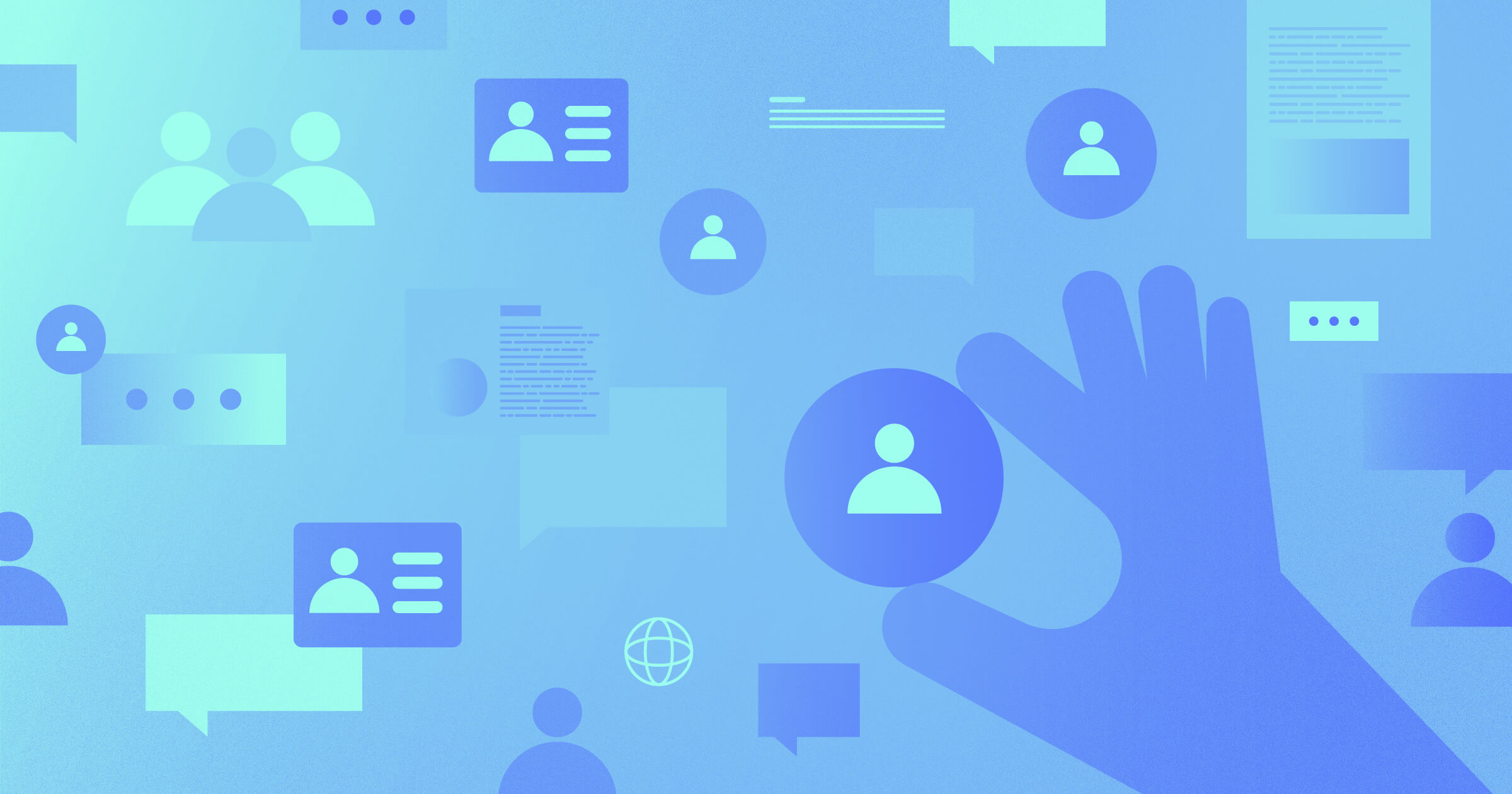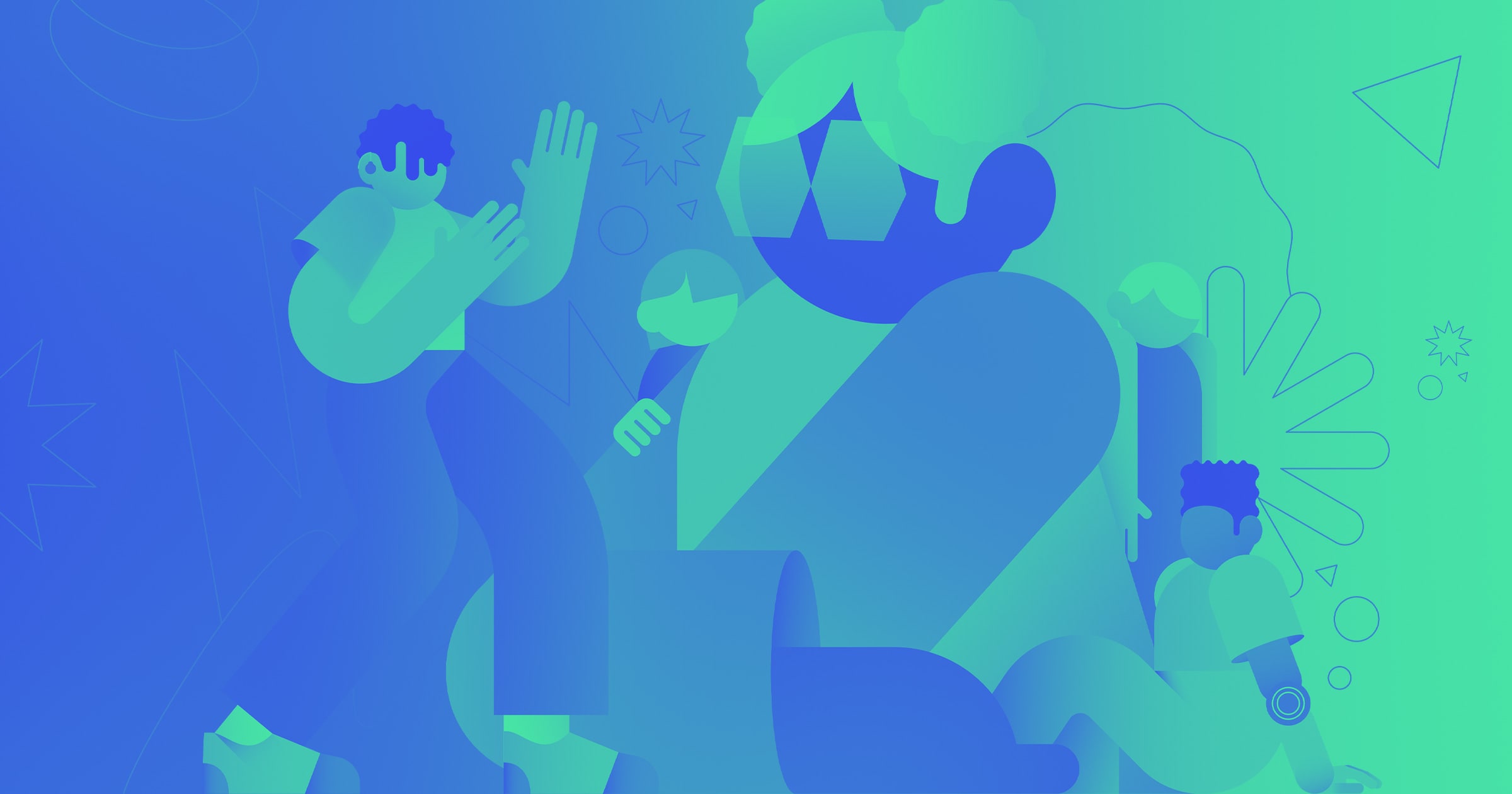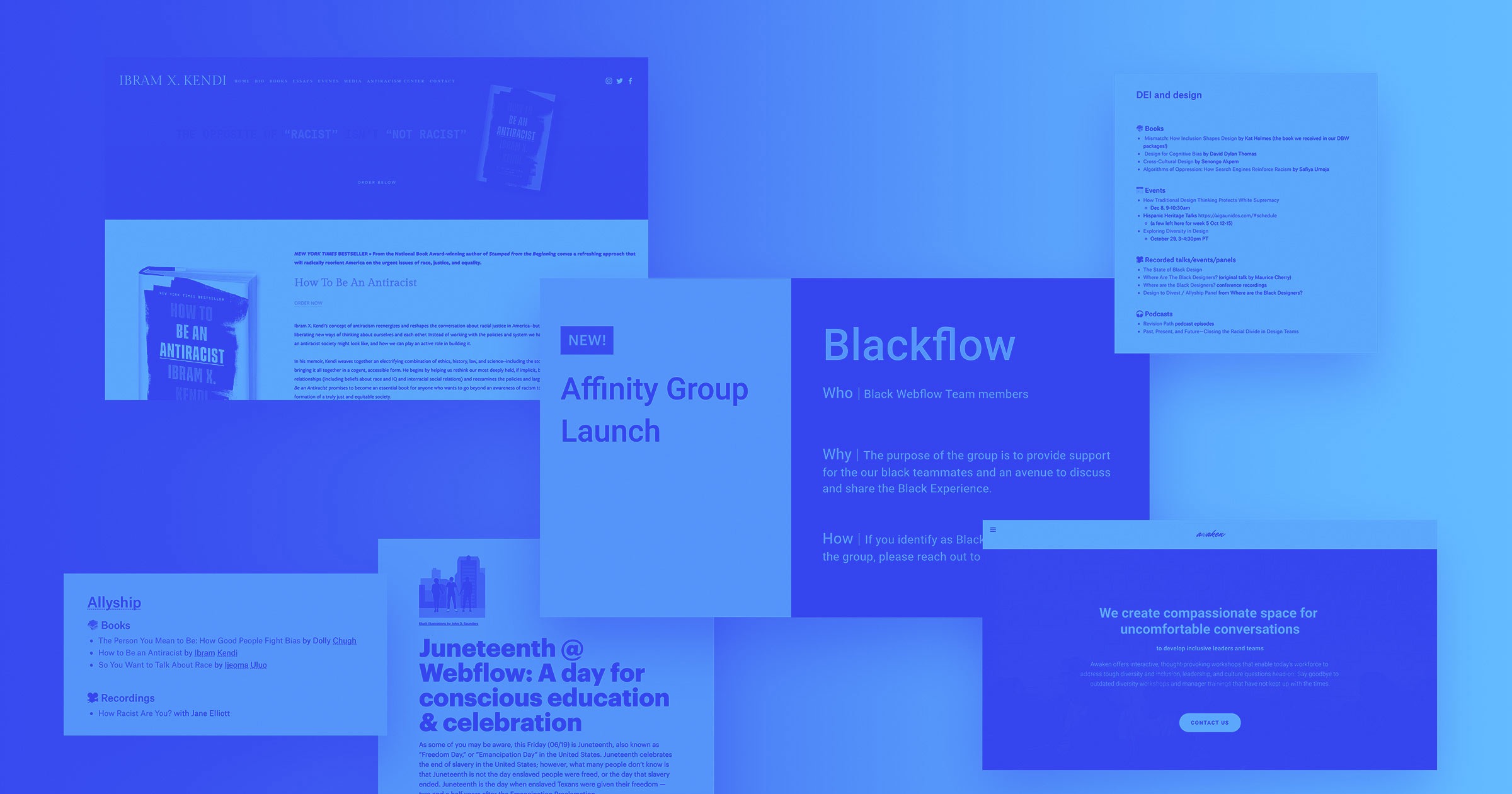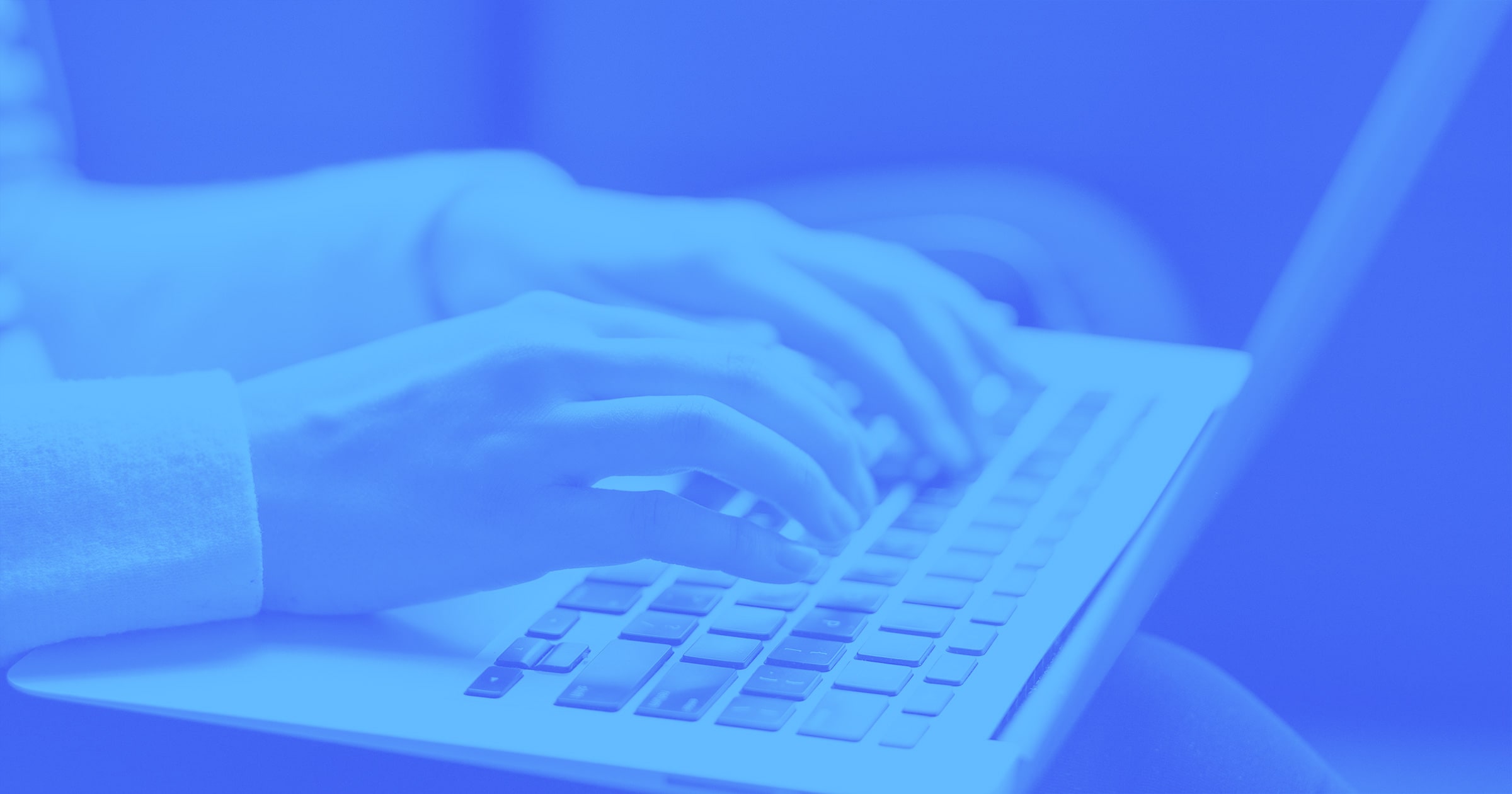Hiring intentional managers helps build an inclusive and diverse work culture. We interviewed four managers to get a peek into how they're living impactful lives at Webflow.
One of the key components to designing an inclusive and diverse workplace culture is hiring managers who understand how much their role impacts the sense of belonging and psychological safety their reports will feel.
At Webflow, we are lucky to have hired managers who are up for the challenge. Through our hiring process, we ensure all employees truly understand and embody our 7 core behaviors that have defined the success of our business. Webflow believes it’s important for our managers to be well equipped to champion diversity, equity, and inclusion (DEI) efforts. (In fact, it’s a business objective!)
Today, we interviewed four managers across customer support, engineering, and design to dive deeper into how management looks like at Webflow.
Interview panel
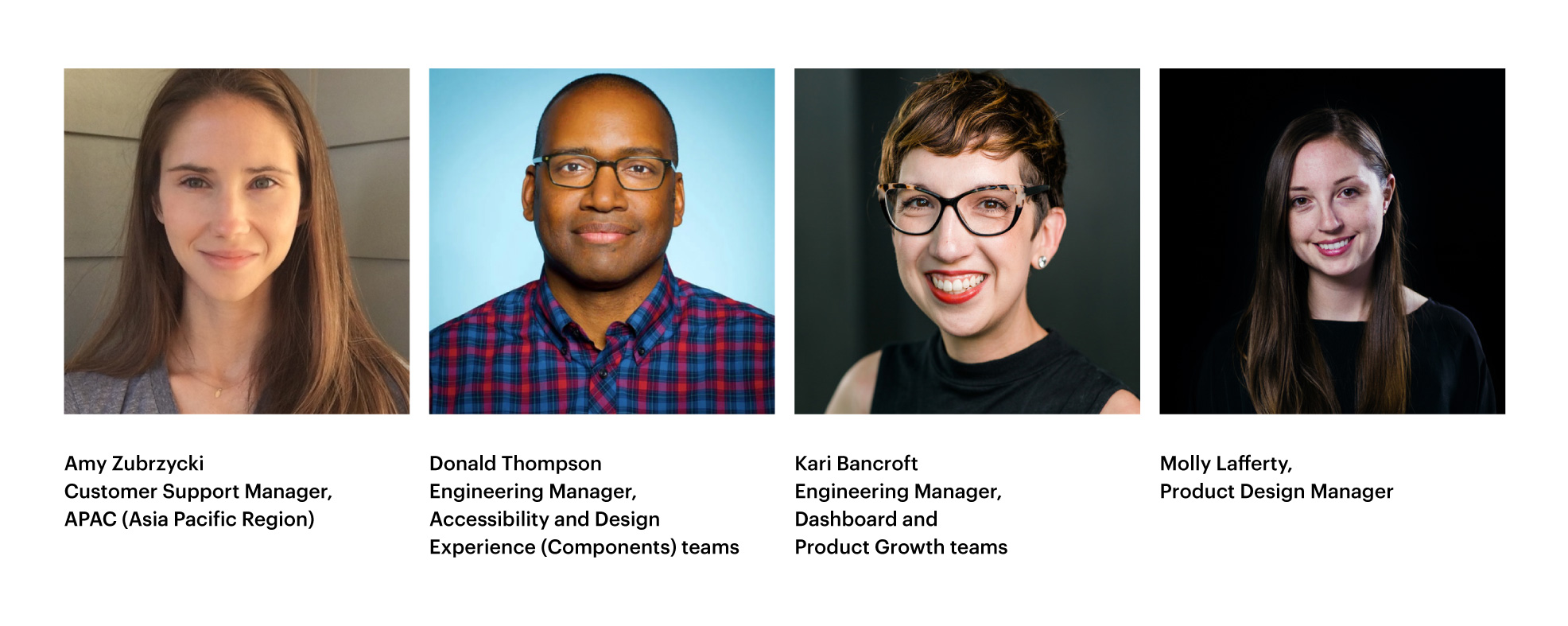
Why did you decide to become a manager at Webflow?
Amy: “Before Webflow, I worked in health tech. I was originally brought on at Webflow as an IC (individual contributor) for the APAC team. Customer support needed to be expanded in the APAC region and I was up for the challenge to build a team.”
Donald: “I was an Engineering Manager at a Email Service Provider (ESP) company where I worked together with Josh Cypher, a current Engineering Manager at Webflow. Through Josh, I made connections with Leonard Souza, Director of Engineering at Webflow. I was really impressed with the product and team.”
Kari: “Before Webflow, I worked in education tech, where I taught coding. I was looking for technical growth and wanted to work at a product-focused company. I chose to be a manager at Webflow because I wanted to support a team and work on a product I care deeply about.”
Molly: “I enjoyed being a player-coach at my last company, but I especially loved working directly with designers, building their confidence in their work, and creating the best possible work environment for them to succeed. Webflow allowed me to focus purely on people management.”
What did your career look like before Webflow?
Amy: “I have a Master’s in Social Work. I worked in social work for 10 years before making the switch to small businesses and startups. I also worked in the prison and healthcare industries”.
Molly: “I worked in the agency world before I found Webflow. Webflow is my first in-house role.”
How does Webflow compare to other companies you have worked for before?
Amy: “I have experience working in the corporate world prior to Webflow. Webflow has a people-first mindset — whether it’s the team, employee, or customer. You have a voice, and your opinion matters.”
Donald: “Other companies I have worked at before were very conservative and highly structured. At Webflow, we get to create our own reality. Managers have the ability to determine the best course of action for their teams. We have tons of freedom. Our team gets to work together to define the philosophy of our culture.”
Molly: “Webflow is intentional with its work environment by championing remote work and integrating extraordinary kindness. It is easy to reach out to people even on the first day.”
Tell me in a few sentences a little about your team.
Amy: “The APAC customer support team is a mighty, close knit team. We’re high touch and provide quick responses to our customers. We really embody the “Start with the customer” core behavior.”
Donald: “I manage the accessibility team. The accessibility team allows our customers to make more accessible choices in their website design. I also manage the designer experience - components team. They are responsible for the touch and feel of the designer, ensuring that our customers have an enjoyable experience.”
Kari: “ I support 2 teams. The product growth team is tasked with solving high impact user problems across the product to accelerate product activation, retention, and monetization. The dashboard team supports the billing and pricing infrastructure, overall project settings, and the showcase and designer page within Webflow.”
Molly: “I support a team of product designers working across five different product areas. On those teams, our designers partner closely with product management and engineering to drive feature work forward. We also come together with Brand Design every Friday for Design Lab Fridays, where we pursue work beyond our product area work and collaborate with team members outside of design."
As a manager, what does supporting your reports look like today?
Kari: “My job is to identify growth potential opportunities for my reports. I do this by seeking out opportunities across Webflow, creating opportunities organically, and working with my reports on their career growth milestones.
A great example of this is a report on my team has experience in hiring before. They weren't sure how this past experience fit into their career aspirations. We had a 1:1 and I identified an opportunity for them to build on this skill further. During the 1:1, this report expressed wanting to stretch their frontend and backend experience. I encouraged them to start reviewing code challenges, leading interviews, and becoming a mentor for our trial project interview stage.”
Molly: “As a manager, I think about my role as people, process and product. People always come first, and I work to ensure our processes support our people. In terms of the product, it’s important as a team and a leader to develop a product vision, and coach designers to dream big about their work.”
What has been your favorite part about being a manager?
Amy: “I enjoy coaching and seeing reports’ growth—from onboarding to their impact with the customer and other Webflow teams. It is a joy to figure out a report’s growth potential and goals while ensuring they gain experience and are met with challenges.”
Donald: “I enjoy the freedom of not being opinionated about the codebase. As a Manager, I don’t need to dig into the weeds. I trust my technical leads and engineers. I enjoy being able to focus on the growth and development of my team as well as our business objectives.”
What is one challenge you would like Webflow to tackle as a company?
Donald: “Creating the vision and culture for our engineering org that allows us to scale to meet our aspirations. We are currently working on a scalable foundation for structure and knowledge transparency. We need to make sure DEI is tied into the core culture for the engineering org and not treat it as an add-on.”
Molly: “Accessibility. We have the opportunity to empower millions of people to build truly accessible experiences for the web. It’s a great challenge to have.”
What is one Dream Big idea you would like to create for yourself or your team while working at Webflow?
Amy: “I would like for us to offer localized pricing so Webflow can reach more people and truly empower everyone to create for the web.”
Donald: “Webflow has the power to open an individual to new markets, the power to allow a person or group to share their unique ideas, talents & dreams. It has the potential to enable entirely different classes of people entrance to the power and opportunity of the internet. We all know this. My big dream for myself is to personally share this power with those who we typically don't hear from on the internet. To show people both young and old the agency they truly have at their fingertips now that no-code tools like Webflow exist and are maturing.
My personal goal is to help 10 underrepresented persons/groups from ideation through publication of their ideas on the Internet.
Through the Accessibility team, my goal for the team is to inspire our customers to easily create truly accessible web experiences, not because of compliance but because it's the smart thing to do for their business/organizational goals.”
Kari: “I would like for us to transition existing internal and customer-facing full-stack engineering projects onto platforms powered by Webflow to truly live out our No Code dreams.”
Molly: “I’d love to see us dream even bigger about accessibility, by considering how we can improve the accessibility of Webflow as a tool, as well as make Webflow a truly global product supporting all languages.”


















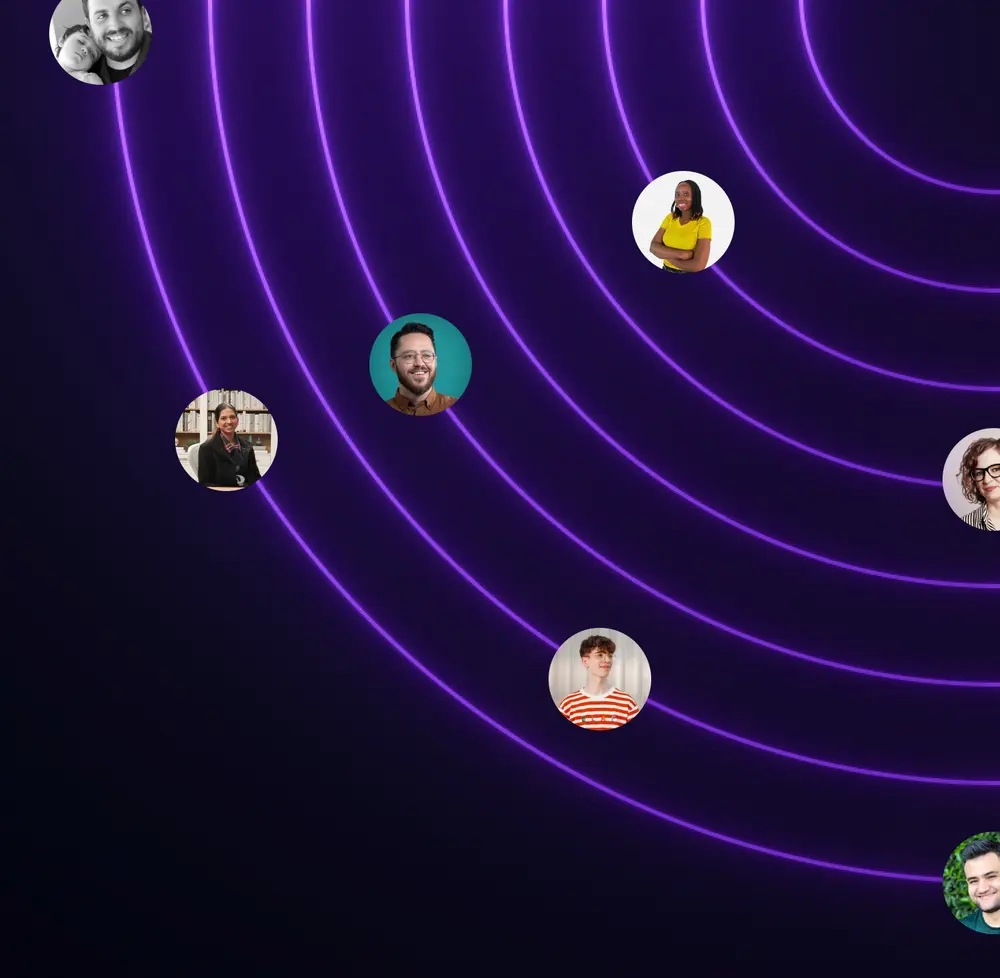
Join the global Webflow Community
Connect and build with 85,000+ community members around the world — whether you're new to Webflow or a seasoned designer, there's a place for you.


